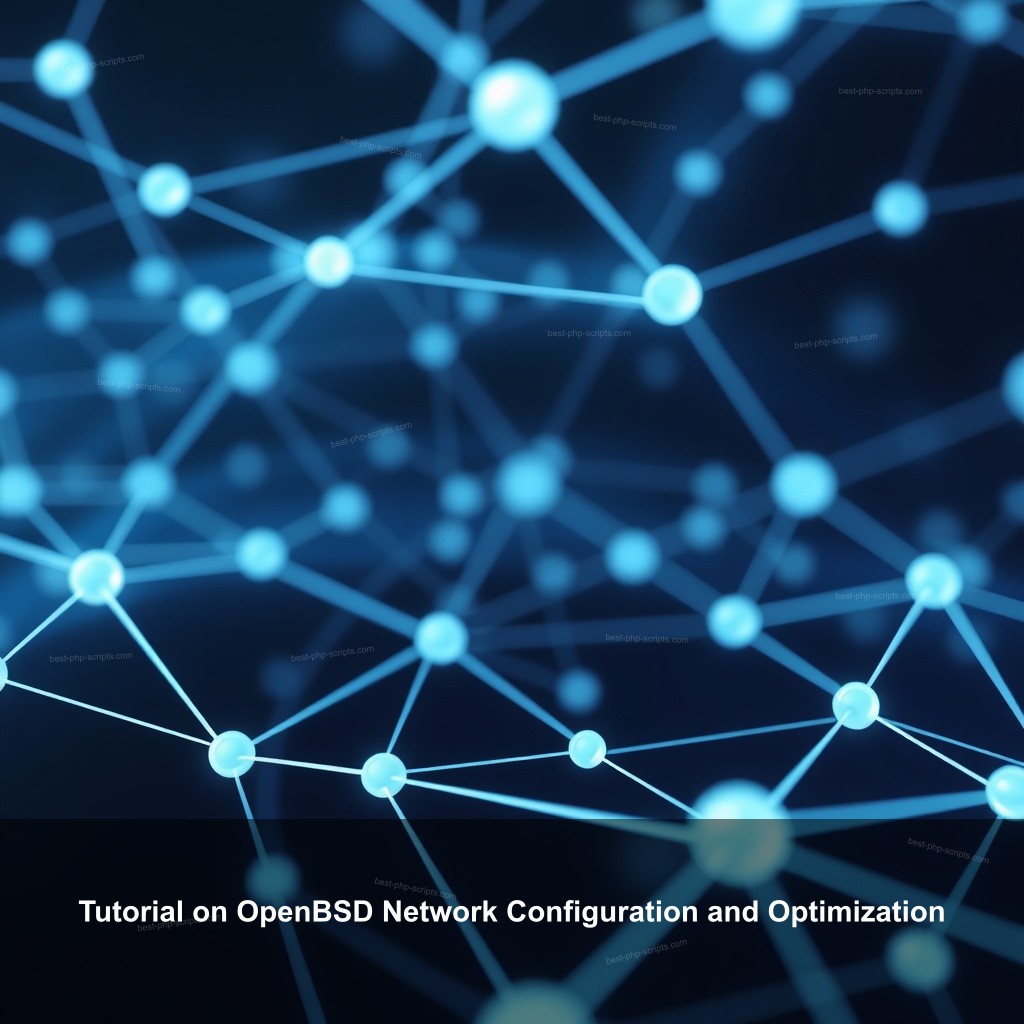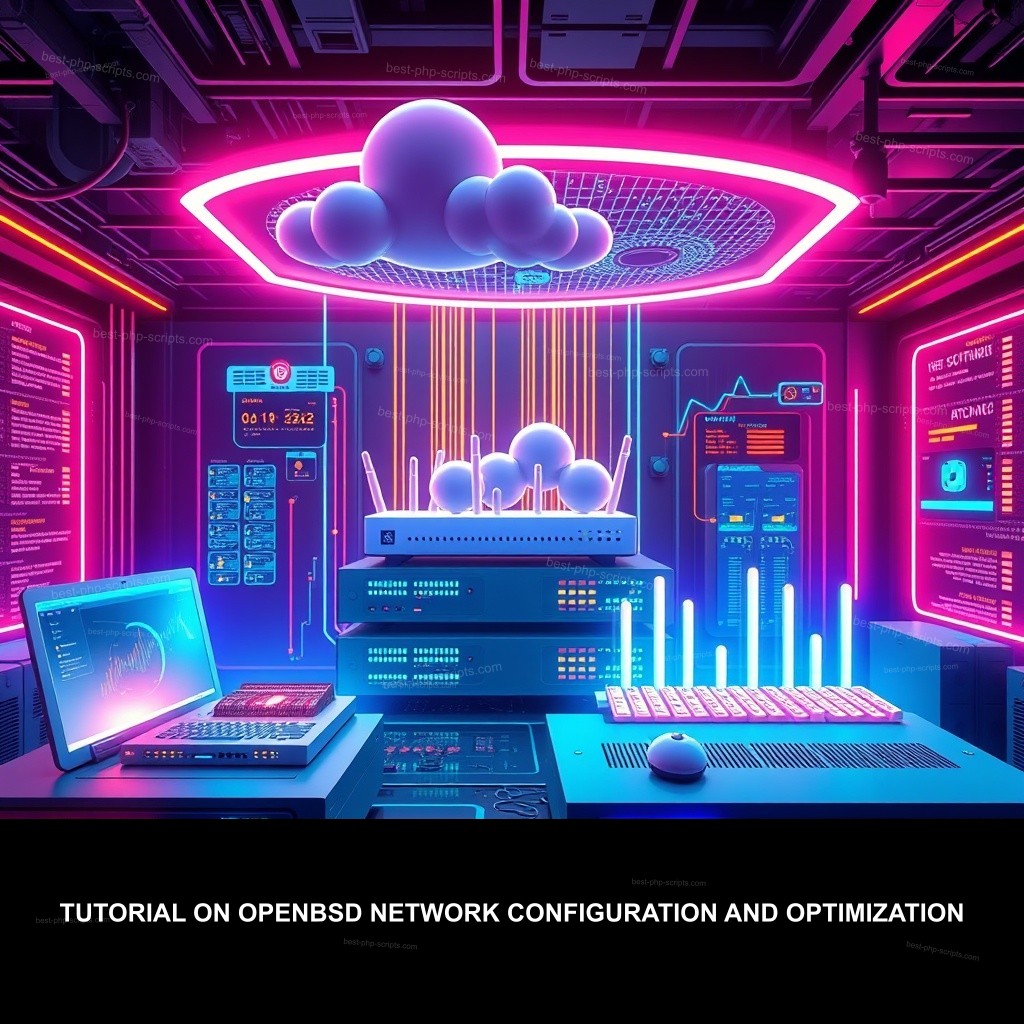Did you know that OpenBSD is renowned for its security and simplicity? In this tutorial by Best PHP Scripts, we’ll guide you through the essentials of OpenBSD network configuration and optimization. Whether you’re a beginner or looking to enhance your networking skills, this post covers how to set up your OpenBSD network seamlessly, optimize its performance, and troubleshoot common issues.

Tutorial on OpenBSD Network Configuration and Optimization
Understanding OpenBSD Networking Basics
Emphasizing security and stability, OpenBSD networking is unique. Before handling configuration, one must first grasp the foundations. OpenBSD offers several tools and commands to properly control network parameters.
| Feature | Description |
|---|---|
| Security | OpenBSD is known for its built-in security measures, making it suitable for sensitive environments. |
| Reliability | The system is designed to be stable, reducing downtime and enhancing performance. |
| Tools | Essential commands like ifconfig and pfctl are available for comprehensive network management. |
OpenBSD network setup tips can further assist in your journey.
How to Configure OpenBSD Network Settings
If you’re looking to configure OpenBSD network settings, various approaches can be utilized to ensure optimal performance.
- Setting Up Static IP Addresses: Configuring a static IP is essential for servers and devices requiring a constant address. Example configurations are stored in
/etc/hostname.if. - Configuring DHCP for Automatic IP Assignment: To allow devices to connect dynamically, you can set up DHCP by editing
/etc/dhcpd.conf. - Understanding and Setting Route Tables: Managing routing is crucial; use
routeto manage your routing tables.
OpenBSD network performance enhancement articles can offer additional insights.
Best Practices for OpenBSD Network Performance
Implementing best practices can significantly improve your OpenBSD networking experience.
- Network Performance Tuning Techniques: Modify TCP settings and buffer sizes to achieve better throughput.
- Monitoring Network Traffic: Utilize tools such as
tcpdumpfor real-time traffic monitoring. - Implementing Security Measures: Use PF (Packet Filter) to create firewall rules that protect your network.
Best security practices for iPhone can provide a comparative study.
OpenBSD Network Troubleshooting Guide
When issues arise, knowing how to troubleshoot effectively is necessary.
- Identifying Common Network Issues: Learn about typical problems like DHCP conflicts and IP misconfigurations.
- Tools for Troubleshooting: Familiarize yourself with OpenBSD’s diagnostic tools, including
pingandtraceroute. - Step-by-Step Troubleshooting Process: Adopt a systematic approach towards diagnosing and resolving network issues.
Common Issues with Youtube Converters can provide perspective on troubleshooting general technology issues.
Advanced OpenBSD Network Configuration Techniques
For advanced users, OpenBSD offers several sophisticated configuration techniques.
- Setting Up VLANs for Network Segmentation: Create VLANs using
vlanctlfor improved network organization. - Load Balancing with CARP: Utilize the Common Address Redundancy Protocol (CARP) for load balancing and redundancy.
- Integrating OpenBSD with Network Services: Configure services like DNS and NTP for comprehensive networking solutions.
OpenBSD network performance discussions can enhance your understanding of performance management.

OpenBSD Networking Tools and Resources
Utilizing the right tools can streamline your OpenBSD networking management.
- Overview of Essential Networking Tools: Discover tools like
pfctlanddhclientthat facilitate network management. - Accessing OpenBSD Documentation and Community Resources: Utilize the OpenBSD FAQ and forums for support and guidance.
- Engaging with the OpenBSD Community: Join mailing lists and forums to share knowledge and experiences.
FAQ
What is OpenBSD Networking?
OpenBSD Networking refers to the networking capabilities and configurations available within the OpenBSD operating system, focusing on security and simplicity.
How do I optimize my OpenBSD network performance?
Optimizing OpenBSD network performance involves tweaking TCP settings, monitoring traffic, and implementing security measures using PF.
What tools can I use for troubleshooting OpenBSD networking issues?
Tools like ping, traceroute, and tcpdump are essential for diagnosing and troubleshooting networking issues.
How can I set up VLANs in OpenBSD?
Setting up VLANs in OpenBSD requires using the vlanctl command to create and manage virtual LANs.
What is the role of CARP in OpenBSD?
CARP (Common Address Redundancy Protocol) is used in OpenBSD to provide redundancy and load balancing for network services.
Conclusion
In this guide, we covered essential aspects of OpenBSD networking and optimization. We hope you found valuable insights and tips to improve your networking experience. Feel free to share your thoughts or ask questions in the comments. For more information, visit Best PHP Scripts.

Leave a Reply